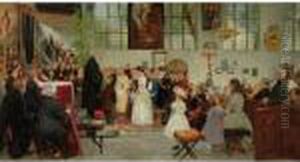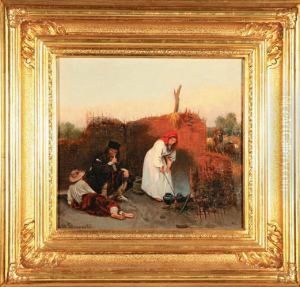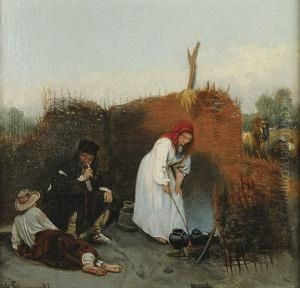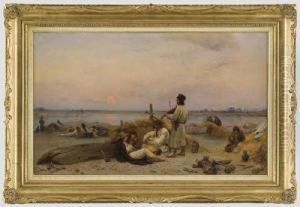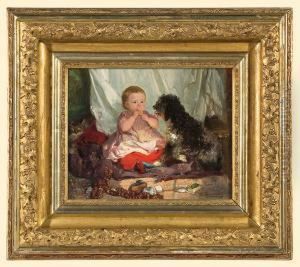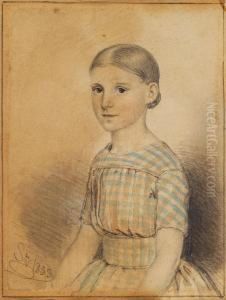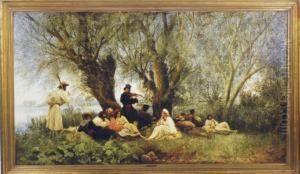August Wilhelm Stryowski Paintings
August Wilhelm Stryowski was a notable Polish painter, born in 1834 in Gdańsk (then part of the Kingdom of Prussia, now in Poland) and died in 1917. His life and career spanned an interesting period in European history, marked by significant political and social changes that influenced the art world in profound ways. Stryowski was primarily known for his genre scenes, landscapes, and portraits, capturing the essence of Polish culture, rural life, and the natural beauty of his homeland with a keen eye and a delicate hand.
Stryowski's artistic journey began at the Academy of Fine Arts in Düsseldorf, a hub for many Polish artists in the 19th century. This institution was renowned for its rigorous training and emphasis on detailed, realistic paintings. Under the tutelage of influential teachers, Stryowski honed his skills and developed a style that was deeply rooted in the academic tradition but also infused with a personal touch that set his work apart. After completing his studies, he returned to Poland, where he became an active participant in the local art scene, contributing significantly to the development of Polish art in the late 19th and early 20th centuries.
Throughout his career, Stryowski was deeply influenced by the changing political landscape of Poland and Europe. The partitions of Poland and the struggle for independence from foreign powers were recurrent themes in his work, reflecting a sense of national pride and a longing for freedom. His paintings often depicted scenes from Polish history and folklore, which resonated with the patriotic sentiments of his contemporaries. Despite the popularity of Impressionism and other modern movements in Europe at the time, Stryowski remained committed to the academic style, emphasizing realism and attention to detail.
Stryowski's contribution to Polish art was not limited to his own work. He was also a mentor to younger artists, imparting his knowledge and skills to the next generation. His legacy is seen in the continuation of the academic tradition in Polish art, even as the world moved towards more abstract and experimental forms. Today, Stryowski's paintings are held in high regard, not only for their artistic merit but also for their historical significance, offering a window into the cultural and political landscape of Poland in the 19th century.
